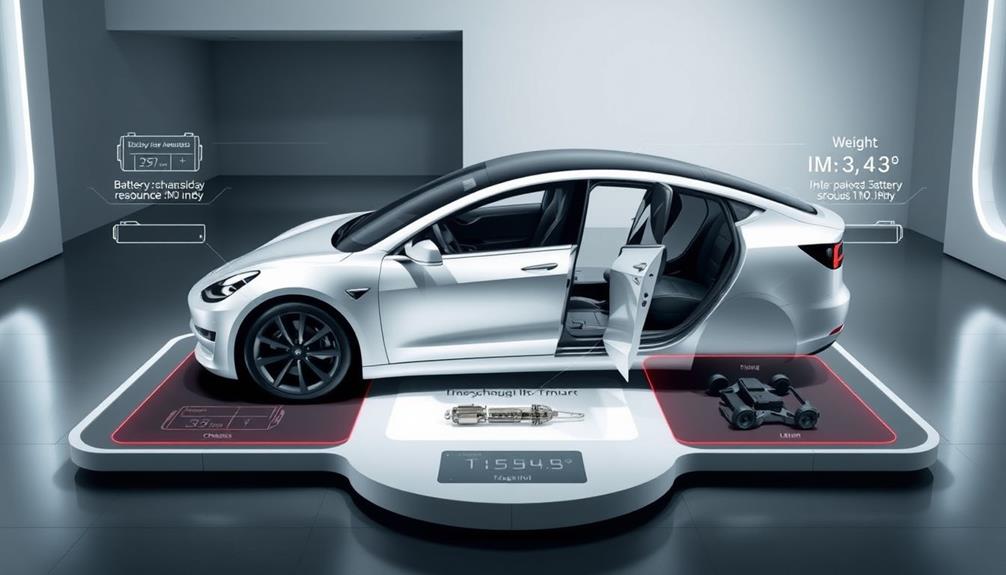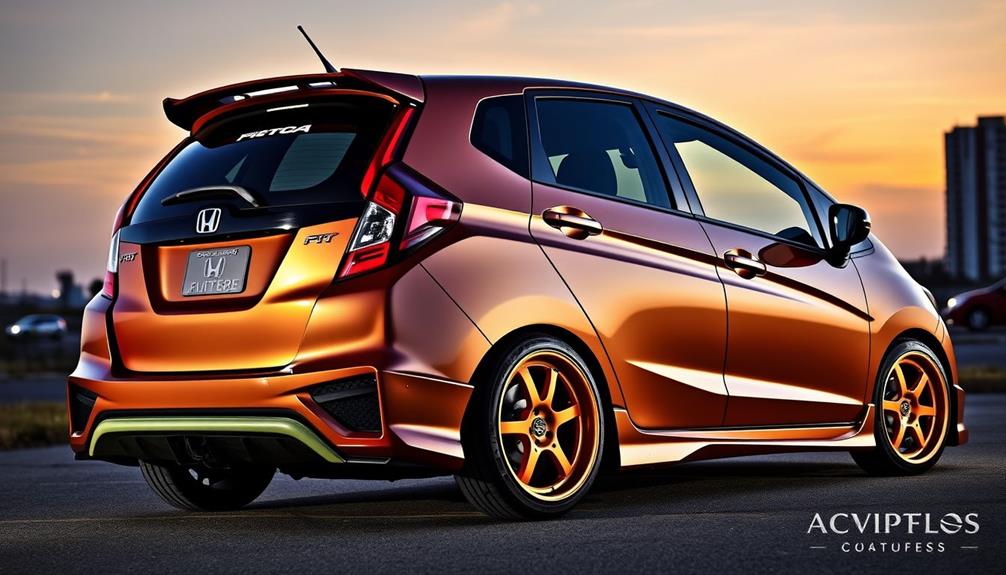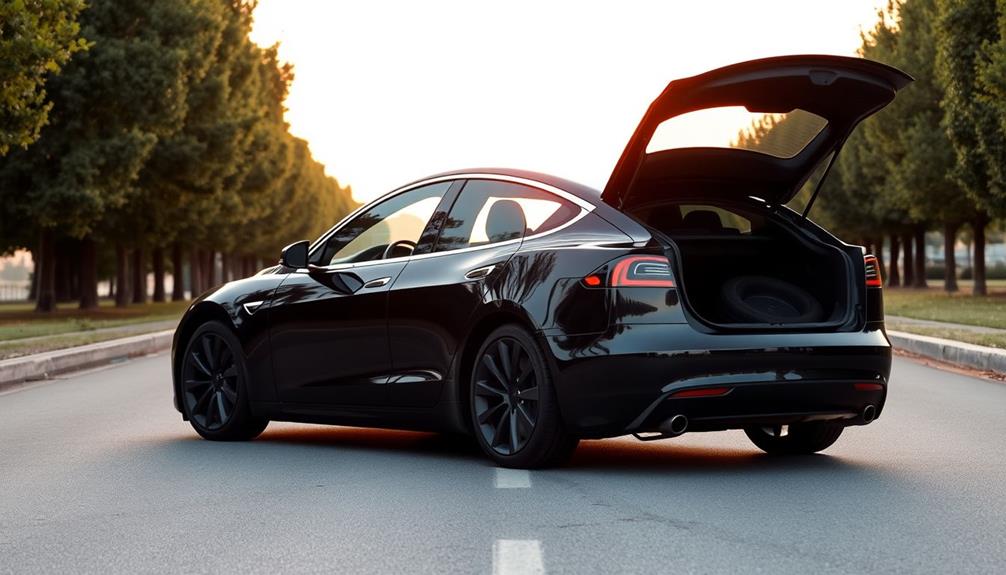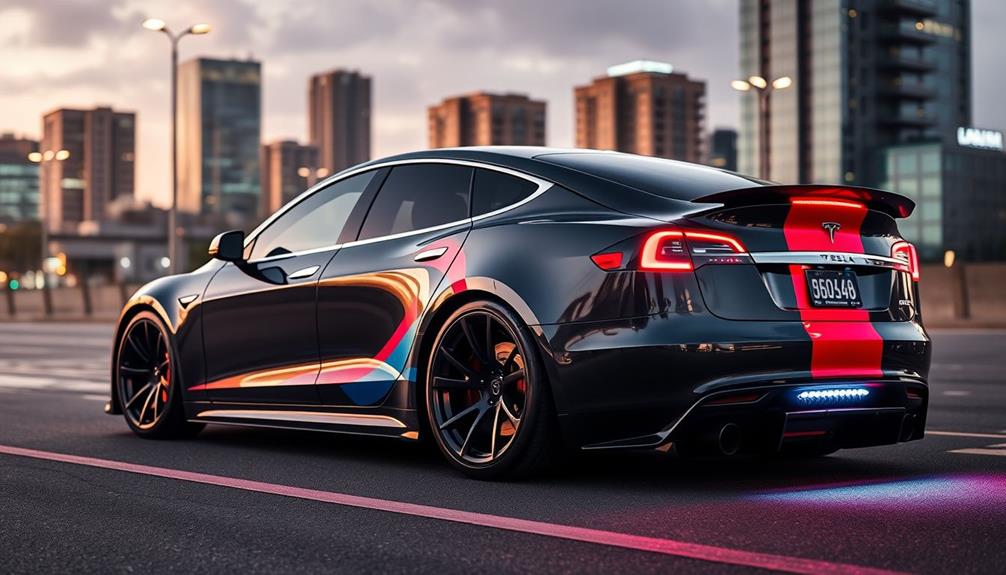The Tesla Model 3 is impressively lightweight for an electric sedan. The Standard Range Plus weighs just 3,582 lbs, making it the lightest option in Tesla's lineup. In contrast, the Long Range and Performance models are heavier at 4,065 lbs due to their dual-motor setups. This reduced weight enhances acceleration, with the Standard Range Plus going from 0-60 mph in only 5.8 seconds. Plus, the efficient battery pack design aids in stability and performance, ensuring a responsive driving experience. If you're curious about how this weight impacts other aspects, stick around to discover more insights.
Key Takeaways
- The Tesla Model 3 Standard Range Plus weighs 3,582 lbs, making it the lightest option in the lineup.
- Both Long Range and Performance models have a curb weight of 4,065 lbs due to additional features.
- Electric motor technology allows for lighter structures compared to traditional vehicles, enhancing overall efficiency.
- The Standard Range Plus accelerates from 0-60 mph in 5.8 seconds, benefiting from its lighter weight.
- Weight distribution in the battery pack optimizes stability and agility, improving driving performance compared to heavier competitors.
Overview of Tesla Model Weights
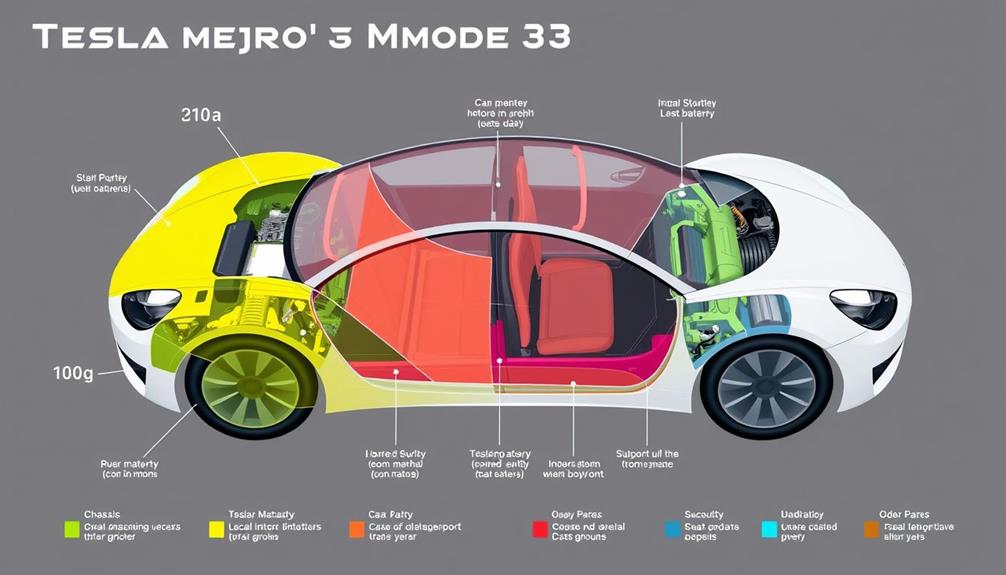
When considering the weights of Tesla models, you'll notice a distinct difference between the various variants, particularly with the Model 3. The Model 3 Standard Range weighs in at 3,582 lbs, making it one of the lighter options in Tesla's lineup. In contrast, both the Long Range and Performance models tip the scales at 4,065 lbs each. This weight difference is primarily due to the additional features and dual-motor setups in the Performance models, which enhance their capabilities.
Electric vehicles like the Model 3 benefit from advanced electric motor technology, allowing for a lighter overall structure compared to traditional vehicles with internal combustion engines. The single motor in the Standard Range variant contributes to its lower weight, while the dual-motor configuration in the Long Range and Performance models adds more heft.
Cargo space can also impact the weight of these models, but Tesla has managed to strike a balance between functionality and performance.
Ultimately, the weight of each Model 3 variant reflects Tesla's commitment to efficiency, offering you a range of choices that cater to your performance needs without sacrificing the benefits of electric vehicle technology.
Tesla Model 3 Weight Specifications
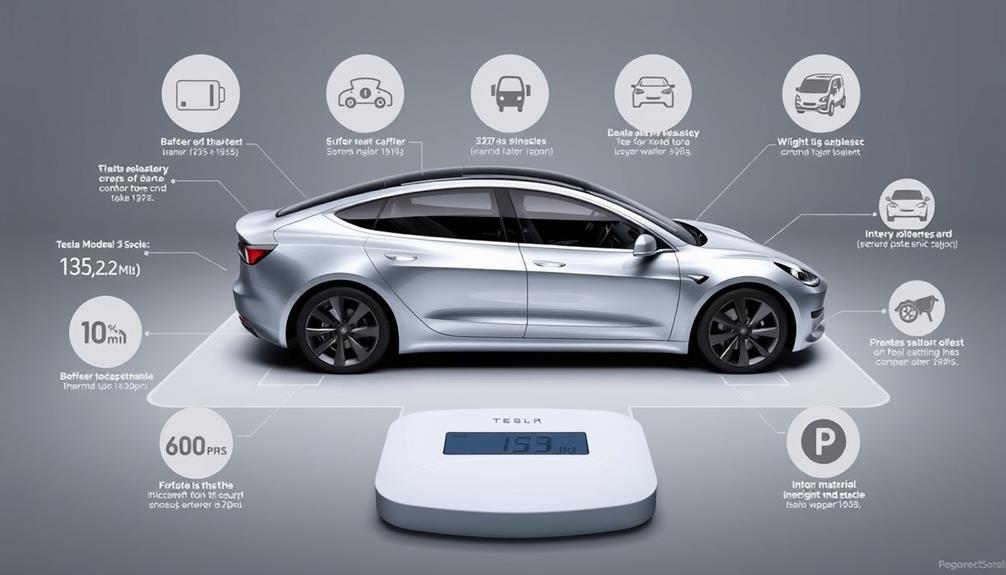
The Tesla Model 3 offers distinct weight specifications that reflect its design and performance capabilities. When looking at the different trims, you'll find that the Standard Range Plus weighs 3,582 lbs (1,628 kg), making it the lightest option in the lineup. In contrast, both the Long Range and Performance trims have a curb weight of 4,065 lbs (1,844 kg).
This variance in weight is important, as it affects both performance and efficiency. For instance, the Standard Range Plus can accelerate from 0-60 mph in just 5.8 seconds, showcasing the effectiveness of its lightweight design. The electric motors in the Model 3 contribute to this reduced weight compared to traditional engines, enhancing overall efficiency while also providing significant cargo space of up to 24 cu ft (682 L).
Here's a quick breakdown of the weight specifications:
| Model Trim | Curb Weight |
|---|---|
| Standard Range Plus | 3,582 lbs (1,628 kg) |
| Long Range | 4,065 lbs (1,844 kg) |
| Performance | 4,065 lbs (1,844 kg) |
Impact of Weight on Performance

Weight considerably influences the performance of the Tesla Model 3, affecting everything from acceleration to handling. The lighter Standard Range Plus model, with a curb weight of 3,582 lbs, can accelerate from 0-60 mph in just 5.8 seconds. In contrast, the Performance model, weighing 4,065 lbs, achieves this in a blistering 3.1 seconds thanks to its heavier battery pack and dual-motor setup.
This weight distribution is cleverly optimized, as the battery pack is low in the chassis, which enhances stability and cornering performance.
You'll notice that a lighter vehicle generally offers better energy efficiency, with the Standard Range model boasting an EPA estimated range of 272 miles.
The overall design of the Model 3 contributes to its agility, allowing for a more responsive driving experience compared to heavier competitors in the electric sedan segment.
So, when you're behind the wheel, the weight impacts not just how quickly you can accelerate but also how confidently you can navigate corners, making each drive enjoyable and efficient.
Fundamentally, the balance of weight in the Model 3 plays an essential role in its performance and efficiency.
Frequently Asked Questions
Is a Tesla Lighter Than a Normal Car?
Yes, a Tesla can be lighter than many traditional cars. With its electric motors and innovative design, it often weighs less than comparable internal combustion engine vehicles, enhancing efficiency and performance without sacrificing comfort or features.
Is the Tesla Model 3 Heavy?
You might think electric cars are heavy, but the Tesla Model 3 isn't. At 3,582 lbs, it's surprisingly light, enhancing performance and efficiency while outshining many traditional sedans in the weight department.
What Is the Weight Distribution of a Tesla Model 3?
The weight distribution of a Tesla Model 3 is optimized for stability, with its battery pack mounted low in the chassis. This design enhances handling, providing responsive steering and a balanced ride quality you'll appreciate.
How Heavy Is the Lightest Tesla?
You might think the lightest Tesla would weigh a ton, but it’s actually 2,723 lbs. That’s the Tesla Roadster, showcasing how innovative design helps keep electric vehicles surprisingly light without sacrificing performance. The Tesla weight is achieved through the use of lightweight materials such as carbon fiber and aluminum, as well as through careful engineering and design. This focus on reducing weight not only improves the vehicle’s overall efficiency and range, but also enhances its agility and acceleration. As Tesla continues to push the boundaries of electric vehicle technology, we can expect even more impressive gains in terms of both performance and weight reduction.
Conclusion
So, there you have it—the Tesla Model 3, a marvel of modern engineering that weighs as much as a small elephant in a tutu. Who needs a lightweight performance when you can have the thrill of dragging around extra pounds? Forget about agility and speed; you're driving a green chariot! Just remember, while you're saving the planet, you're also giving physics a hearty chuckle. Embrace the irony; after all, every extra ounce fuels the eco-friendly revolution, right?
